
Chao Yin Loong
Principal Solution Architect
Tencent
Yin Loong has more than 20 years in the video and network industry. He started his career at Mediacorp Singapore where he implemented the first DVB-T network in South East Asia. He has worked at Cisco Systems implementing various OTT video streaming infrastructure for customers. Currently he is a Principal Solution Architect with Tencent CDN Edge One and Video-On Demand product architecture team. He has helped customer architect solutions to protect both their web and video streaming infrastructure. He also has experience in API security and fingerprinting solutions.
“One fingerprint system to rule them all“
Network operators and telcos are facing increasing cybersecurity attacks. Denial of service and data breaches among telcos are accelerating. Network operators are increasingly searching for good and effective solutions. This presentation aims to introduce an innovative and effective technique to mitigate such attacks. He will also introduce how fingerprinting technology with AI can be used across the whole stack to protect against cyberattacks. It will show fingerprint calculation and usage techniques of the network stack up to the device level in a technical presentation for a technical audience.

Henry Cheung
Consulting Systems Engineer
Juniper Networks
Henry is a consulting sales engineer and has joined Juniper since 2007. He was a resident engineer responsible for network architectural design and played key role in a few major network migrations for top SPs in the region. He is also experienced in network modeling and has helped Tier1/2 service providers in APAC to build new solution such as network optimization, anti-DDoS, and WAN automation.
“A modern and innovative way to tackle volumetric DDoS“
Cybercriminals do not stand still. Their tricks to launch DDoS are evolving and becoming more sophisticated. A legacy solution that relies on netflow, a hard-coded signature database and complex traffic redirection cannot catch the tide.
This paper describes a modern and innovative way to tackle volumetric DDoS attack. The approach uses traffic analytics along with advanced silicon technology to accurately identify malicious user behavior and mitigate DDoS. Henry will also share successful stories where customers are experiencing huge benefits from the effective detection and real-time mitigation of rapidly changing multi-vector attacks.

Antonio Cervero Cocera
Director, Engineering
Cloudflare
With over 17 years of experience in the tech industry, Antonio is currently the Director of Infrastructure Engineering at Cloudflare, based in Singapore. His journey at Cloudflare began in 2017 as an SRE Team Lead, progressing through various leadership roles, including SRE Manager and Senior Manager of Infrastructure Engineering.
In my current role, he oversee the strategic direction and operational management of Cloudflare’s global infrastructure, driving innovation and scalability while ensuring robust security measures.
Before joining Cloudflare, he held technical and managerial positions at ChinaNetCloud (Shanghai), where he led a team responsible for 24×7 monitoring and incident management. He has also contributed my expertise as a NOC Engineer at eBay Classifieds Group and as a Linux System Engineer at SPIL GAMES, where he focused on maintaining and enhancing large-scale hosting environments. His technical background is further enriched by experience in systems engineering, network administration, and software development.
Throughout his career, he has been passionate about leveraging automation, building scalable systems, and leading teams to achieve operational excellence. He is committed to continuous learning and innovation, with a focus on developing solutions that meet the evolving demands of modern infrastructure.
His academic background includes a degree in Computer Engineering, and he have a strong foundation in numerous technologies.
“Deployment automation: From legacy systems to event-driven architecture“
At Cloudflare, innovation has always been our driving force. Over the past few years, we have significantly increased our capacity, experiencing massive growth across all continents. This rapid expansion has introduced various challenges in infrastructure management, particularly in terms of security and scalability. In this paper, we will share our journey in managing this evolving infrastructure, detailing the solutions we’ve developed, the new challenges we face, and the architectural vision we are pursuing.
We will also explore the available market options and explain why we have chosen to build an event-driven system as the foundation for our future growth. We will share the lessons we’ve learned while building software systems and automation, discuss how we’ve enhanced trust and efficiency in our processes, and outline our next milestone towards achieving Zero Touch Provisioning for any device on any location.
We will take a deep dive into the platforms we have developed, the automation framework we utilise, and how everything integrates to deliver seamless automation and maintain a consistent source of truth. Our focus will be on the key milestones achieved and the challenges we’ve encountered along the way.

Susana Contrera
Infrastructure Network Engineer
Meta
Susana is an Infrastructure Network Engineer at Meta. Her team is a key partner to Network Engineering teams, as it enables them to translate network designs into reality by leveraging her expertise around Datacenter Infrastructure and Design. Before this, she lead the team responsible for building the Edge Network for the EMEA region.
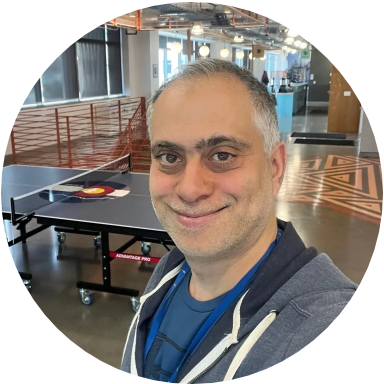
Hany Morsy
Network Engineer
Meta
Susana is an Infrastructure Network Engineer at Meta. Her team is a key partner to Network Engineering teams, as it enables them to translate network designs into reality by leveraging her expertise around Datacenter Infrastructure and Design. Before this, she lead the team responsible for building the Edge Network for the EMEA region.
Hany is a seasoned Network Engineer with over 25 years of experience, including nearly 11 years at Meta. As a key contributor to the evolution of Meta’s network fabric for AI services, he has played a significant role in advancing the company’s AI infrastructure. With a deep understanding of AI network transport challenges and options, Hany brings valuable expertise and innovative thinking to the intersection of AI and network technologies.
“Meta’s network journey to enable AI“
Over the years, Meta’s AI infrastructure has undergone a remarkable transformation, transitioning from CPU-based training to GPU-based training within the same host and ultimately adopting distributed systems interconnected by a network.
Today, our model training heavily relies on a RoCE-based network fabric with a CLOS topology, where leaf switches are connected to GPU hosts and spine switches provide Scale-Out connectivity to GPUs in the cluster. This presentation will delve into the progressive evolution of our network builds, specifically tailored to support the demanding requirements of AI services.
Attendees will gain insights into the challenges encountered, innovative solutions implemented, and the strategic considerations behind building an efficient and high-performance fabric for AI workloads at Meta.

Thomas Corre
IP regional Product Line Manager and Consulting Engineer
Pioneer Consulting
Thomas is a regional Product Line Manager and Consulting Engineer at Nokia with 13+ years of experience in IP/MPLS architecture engineering and presales. Throughout his career, he has focused on EMEA and APAC customers, gaining extensive knowledge in Cloud computing, IP Routing technologies, and 5G Anyhaul. As a regular speaker at Telecom SudParis for “Advanced Network Architecture” specialization, he has solid experience in providing customer workshops/technical training courses and understanding their networking needs.
“Building a digital twin from your source of truth“
This talk will demonstrate the power of harnessing a reliable Source of Truth for replicating a production network as a “Digital Twin”. With a Digital Twin, you can proof-of-concept, test and validate network upgrades, migrations and changes with real-world accuracy using all the same tooling you use on a production network. We will show how Containerlab can be integrated with Netbox for the creation of Digital Twin networks in the lab.

Jonathan Javier
Director, Client Solutions
Pioneer Consulting
Jonathan specialises in network infrastructure and project management, bringing over a decade of experience in the telecommunications industry. Throughout his career, he played pivotal roles in overseeing and managing large-scale projects, including the deployment of subsea cable systems and the execution of network expansion initiatives across Asia. Currently, he serves as the Director for Client Solutions at Pioneer Consulting, where he leads the development and delivery of tailored solutions to meet the diverse needs of our clients.
Jonathan hold a bachelor’s degree in Electronics Engineering from FEU-Institute of Technology, which has provided him with a strong technical foundation that he continued to build upon throughout his career. Based in the Philippines, he leverage his regional expertise to navigate the unique challenges and opportunities within the Asian market. His expertise lies not only in managing complex projects but also in bridging the gap between technical requirements and strategic business objectives, ensuring that each project he oversees delivers measurable value to stakeholders.
Outside of work, he is passionate about staying active and engaging in recreational activities. He enjoys playing board games, badminton, and volleyball, which provide a great balance to my professional life and keeping him energised.
“Undersea highways: The basics of submarine cable systems“
A comprehensive introduction to the critical infrastructure that powers global communications. Submarine cable systems form the backbone of the internet, carrying over 95% of international data traffic across oceans and connecting continents in milliseconds.
This presentation aims to demystify the complex world of submarine cables by covering key aspects such as their design, deployment, and maintenance. Attendees will gain insights into the engineering marvels behind these underwater networks, including the types of cables used, the process of laying cables on the ocean floor, and the challenges involved in ensuring their durability and reliability in harsh marine environments.
The presentation will also explore the strategic importance of submarine cables in the digital age, highlighting their role in supporting global connectivity, data centers, and cloud services. Whether you are a seasoned telecommunications professional or new to the field, this session will provide a solid foundation in understanding how these undersea highways function, their impact on the global economy, and the emerging trends and technologies shaping the future of submarine cable systems.
Join us as we dive deep into the world beneath the waves and uncover the vital infrastructure that keeps our world connected.
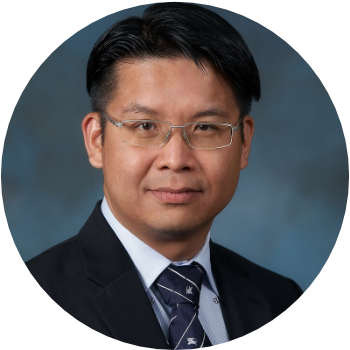
Dennis Kom
Sales Director
Corning
Dennis has more than 20 years of working experience in the info-communication industry. His passions and interests revolved around the domains of structured cabling systems, enterprise networking, digital video technologies and low voltage power protection systems.
Prior to joining Corning, Dennis had assumed several key positions within Sony Electronics. He had also held technical positions as Senior Network Engineer with Defence Science & Technology Agency, Sales and Application Engineer with VMC Technology, and Head of Engineering / Systems Sales with Knockner-Moeller.
“From fast to faster: A journey through cutting-edge transceiver tech, backbone infrastructures, and AI/ML connectivity“
OpenAI’s achievement in training ChatGPT-3.5 on 175 billion parameters, leveraging thousands of GPUs, underscores the immense potential for implementing AI clusters in diverse customer environments.
This presentation will explore:
- How 400G NDR (Next-Generation Data Rate) InfiniBand in a 2x400G optic is revolutionizing support for AI and machine learning models
- The differences with Ethernet, as well as complex terms like GPU, POD.
- The scale and trajectory of AI architectures (Leaf-Spine networks)
- Getting to grips with the Nvidia DGX SuperPOD
- Evolution of Ethernet Transceivers and their connectivity similarities with InfiniBand trends, as well as how structured cabling can support both
- Evolution of duplex transceiver to multifiber transceivers and migration paths to new connector formats
Jose is a production network engineer in the Network organisation at Meta. His team’s responsibilities include maintaining, monitoring, and improving the global production network infrastructure used for AI training.
Daniel is a Production Engineer in Meta’s Network.AI organisation. He develops and implements synthetic monitoring and validation solutions across all Meta network domains, including those used for AI, to ensure optimal performance and reliability.
“The boy who cried SLI: A tale of too many alerts“
For our global networks, managing on-call notifications and ensuring network reliability are pivotal challenges that have evolved significantly over the years. This presentation presents a comprehensive overview of the historical progression of alert systems within Meta network infra, emphasizing the on-call experiences of network teams faced with noisy alerts. The traditional methods often led to alert fatigue, where critical alerts were lost amidst numerous non-critical notifications, compromising response times and network reliability.
The core of this study introduces a new product developed based on Network Service Level Indicators (NetSLI). This innovative approach aims to drastically change the notification processes for on-call engineers by implementing intelligent alerting mechanisms that prioritize alerts based on their impact on service reliability. We leverage advanced algorithms to effectively filter and escalate alerts, ensuring on-call personnel receive timely and relevant notifications. Furthermore, it incorporates a sophisticated tracking system to monitor and measure the progress in handling reliability issues, providing actionable insights into system performance and on-call response efficacy.
By integrating these technological advancements, the proposed solution enhances on-call engineers’ efficiency and significantly improves overall network reliability. This presentation will discuss the implementation strategies, the challenges overcome during the development phase, and the potential future enhancements that could further refine on-call experiences in network operations. Through this innovation, we aim to set a new standard in network management, focusing on reducing noise and enhancing the precision of alerts in high-stakes environments.

Lawrence Leng
Lead Technology Advisor
Anritsu Pte Ltd
Lawrence is Lead Technology Advisor from Anritsu Singapore. He has more than 30 years of experience in the telecom industry. Prior to his career with Anritsu, he was involved in radio frequency research & development work with Mindef in Singapore.
Since joining Anritsu more than 25 years ago, Lawrence has been part of the Field Marketing team that provide technical advice and support to customers and channel partners in the South Asia region with special focus on 5G Mobile Fronthaul, transport technology like 800/400G Ethernet, ECPRI, OTN, etc. During his work, he travels around South Asia countries regularly to present the latest test and measurement solutions relating to telecommunication technologies.
“Wifi-7 technology sharing“
Join our Wifi-7 Technology Sharing session to explore the evolution of IEEE 802.11 WLAN standards. We will cover the limitations of 802.11ac (WiFi-5), the advancements of 802.11ax (WiFi-6), and the differences between WiFi-6 and WiFi-6E. Additionally, we’ll discuss the adoption of the unlicensed 6GHz band and how WiFi-7 technology surpasses its predecessors, enhancing connectivity and performance. Gain valuable insights into the future of wireless networking.

Lefteris Manassakis
Technical Leader
Cisco ThousandEyes
Lefteris is a network engineer with a background in networking research. He is currently a Technical Leader at Cisco ThousandEyes. Previously, he co-founded Code BGP, a company specializing in BGP Monitoring, which was acquired by Cisco.
For more information, please visit his personal webpage at https://manassakis.net/.
“ThousandEyes BGP monitors“
At Cisco ThousandEyes, we are deploying a real-time BGP monitoring infrastructure developed originally by Code BGP, a company Cisco acquired in 2023. In this presentation, we discuss the motivations for developing our own BGP monitoring infrastructure, outline the challenges encountered during the process, and explain the solutions implemented to address those challenges. Lastly, we present routing security related incidents we have identified using our infrastructure.
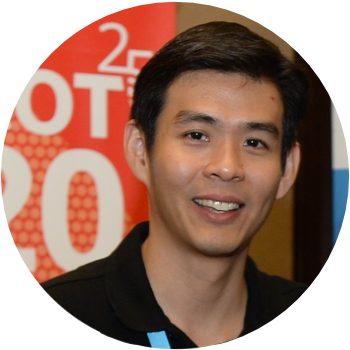
Ng Zen Chuan
Senior Internet Resource Analyst
APNIC
Zen is a Senior Internet Resource Analyst in APNIC’s Services Team. With his specialized knowledge of APNIC policies and Internet resource management, Zen plays an important role in advising and assisting APNIC Members with their membership and Internet number resource queries. Zen also represents the Services Team at many community events to liaise with the Asia Pacific Internet community.
“Lightning Talk: DASH“

Philip Smith
Senior Network Engineer
RouteViews
Philip has been involved in the Internet since the late 1980s. He has run his own consulting company, PFS Internet Development, since 2013. He works for some of his time with the Network Startup Resource Center, and in 2023 started supporting the RouteViews Project as Peering Coordinator. He also consults for several organisations around the world. He is chair of APRICOT and serves on committees of several NOGs. He previously worked at APNIC; before APNIC, he was a member of the Internet Infrastructure Group in CTO Consulting Engineering of Cisco Systems for 13 years.
Prior to joining Cisco in 1998, he worked at PIPEX (which became part of UUNET’s global ISP business), the UK’s first commercial Internet Service Provider. He was one of the first engineers working in the commercial Internet in the UK, and played a key role in building the modern Internet around the world.
Philip has extensive technical and operational experience with the ISPs, Service Providers and IXPs around the world. His areas of experience include IPv6, BGP, OSPF/ISIS, network design, configuration, scaling operations, peering, and training. Philip was inducted into the Internet Hall of Fame in December 2021. Philip has a PhD in Physics, is a native of Scotland, and lives in Brisbane, Australia.
“Lightning Talk: The RouteViews project – Update“
RouteViews was initiated in 1995 at the University of Oregon to allow network operators see what their routing tables looked like from an external perspective. Over the years since, this community project has set up collectors in strategic locations around the world, allowing network operators a rich view of their routing announcements, and researchers a valuable resource for tracking the growth and variations in the global Internet infrastructure.
The 27-year data set of BGP information archived by RouteViews since 1997 helps network operators and researchers identify and address issues related to routing stability, security, and performance of the global Internet. Network operators utilize RouteViews data to understand reachability, hijacks, peer visibility, mass withdrawals, and RPKI status.
This presentation shares the latest developments in the RouteViews project, now operated on behalf of the global Internet community by the Network Startup Resource Center (NSRC).

Kenichi Watanabe
Director, Sales and Business Development
NTT-AT

Yuki Low
Senior Sales Manager
NTT-AT
Kenichi is NTT-AT’s Director of Sales and Biz development, including optical networking related products which support customers to realize stable and robust optical network. He has more than 30 years both Sales and Engineering experience in this field. Prior to transferring Sales in 2013, Kenichi led development team of optical related products which include OLP (Optical Line Protector) and optical connector tester, and he has deep knowledge and expertise in optical physical connection.
Yuki is a Senior Sales Manager in NTT Advanced Technology based in Singapore, where she explores and develops ASEAN markets, builds up the connection with the customers and acts as the communication bridge between Japan and ASEAN countries.
“Return loss problems associated with faster optical networks“
We will talk new problems that have arisen in the physical layer as networks become faster, particularly in the optical connection area, and how to deal with them.
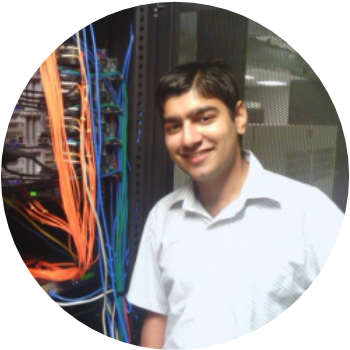
Anurag Bhatia
Network Researcher
Hurricane Electric
Anurag works at Global backbone operator & datacenter provider – Hurricane Electric and is based out of India. He spends a lot of time looking at BGP routing tables, traceroutes across the ocean, interesting patterns & tooling around those patterns. Besides routing, he has a lot of interest in DNS, root DNS servers, network automation & virtualisation.
“Distributed latency monitoring”
Anurag will introduce the idea of metric based monitoring with Prometheus + Blackbox exporter as a modern day alternate to smokeping. This can be used in monitoring latency from self-hosted probes around the world as well as RIPE Atlas.

Chao Yin Loong
Principal Solution Architect
Tencent
Yin Loong has more than 20 years in the video and network industry. He started his career at Mediacorp Singapore where he implemented the first DVB-T network in South East Asia. He has worked at Cisco Systems implementing various OTT video streaming infrastructure for customers. Currently he is a Principal Solution Architect with Tencent CDN Edge One and Video-On Demand product architecture team. He has helped customer architect solutions to protect both their web and video streaming infrastructure. He also has experience in API security and fingerprinting solutions.
“One fingerprint system to rule them all”
Network operators and telcos are facing increasing cybersecurity attacks. Denial of service and data breaches among telcos are accelerating. Network operators are increasingly searching for good and effective solutions. This presentation aims to introduce an innovative and effective technique to mitigate such attacks. He will also introduce how fingerprinting technology with AI can be used across the whole stack to protect against cyberattacks. It will show fingerprint calculation and usage techniques of the network stack up to the device level in a technical presentation for a technical audience.

Henry Cheung
Consulting Systems Engineer
Juniper Networks
“A modern and innovative way to tackle volumetric DDoS”
Cybercriminals do not stand still. Their tricks to launch DDoS are evolving and becoming more sophisticated. A legacy solution that relies on netflow, a hard-coded signature database and complex traffic redirection cannot catch the tide.
This paper describes a modern and innovative way to tackle volumetric DDoS attack. The approach uses traffic analytics along with advanced silicon technology to accurately identify malicious user behavior and mitigate DDoS. Henry will also share successful stories where customers are experiencing huge benefits from the effective detection and real-time mitigation of rapidly changing multi-vector attacks.
Antonio Cervero Cocera
Director, Engineering
Cloudflare
With over 17 years of experience in the tech industry, Antonio is currently the Director of Infrastructure Engineering at Cloudflare, based in Singapore. His journey at Cloudflare began in 2017 as an SRE Team Lead, progressing through various leadership roles, including SRE Manager and Senior Manager of Infrastructure Engineering.
In my current role, he oversee the strategic direction and operational management of Cloudflare’s global infrastructure, driving innovation and scalability while ensuring robust security measures.
Before joining Cloudflare, he held technical and managerial positions at ChinaNetCloud (Shanghai), where he led a team responsible for 24×7 monitoring and incident management. He has also contributed my expertise as a NOC Engineer at eBay Classifieds Group and as a Linux System Engineer at SPIL GAMES, where he focused on maintaining and enhancing large-scale hosting environments. His technical background is further enriched by experience in systems engineering, network administration, and software development.
Throughout his career, he has been passionate about leveraging automation, building scalable systems, and leading teams to achieve operational excellence. He is committed to continuous learning and innovation, with a focus on developing solutions that meet the evolving demands of modern infrastructure.
His academic background includes a degree in Computer Engineering, and he have a strong foundation in numerous technologies.
“Deployment automation: From legacy systems to event-driven architecture”
At Cloudflare, innovation has always been our driving force. Over the past few years, we have significantly increased our capacity, experiencing massive growth across all continents. This rapid expansion has introduced various challenges in infrastructure management, particularly in terms of security and scalability. In this paper, we will share our journey in managing this evolving infrastructure, detailing the solutions we’ve developed, the new challenges we face, and the architectural vision we are pursuing.
We will also explore the available market options and explain why we have chosen to build an event-driven system as the foundation for our future growth. We will share the lessons we’ve learned while building software systems and automation, discuss how we’ve enhanced trust and efficiency in our processes, and outline our next milestone towards achieving Zero Touch Provisioning for any device on any location.
We will take a deep dive into the platforms we have developed, the automation framework we utilise, and how everything integrates to deliver seamless automation and maintain a consistent source of truth. Our focus will be on the key milestones achieved and the challenges we’ve encountered along the way.

Susana Contrera
Infrastructure Network Engineer
Meta
Susana is an Infrastructure Network Engineer at Meta. Her team is a key partner to Network Engineering teams, as it enables them to translate network designs into reality by leveraging her expertise around Datacenter Infrastructure and Design. Before this, she lead the team responsible for building the Edge Network for the EMEA region.
“Meta’s network journey to enable AI”
Over the years, Meta’s AI infrastructure has undergone a remarkable transformation, transitioning from CPU-based training to GPU-based training within the same host and ultimately adopting distributed systems interconnected by a network.
Today, our model training heavily relies on a RoCE-based network fabric with a CLOS topology, where leaf switches are connected to GPU hosts and spine switches provide Scale-Out connectivity to GPUs in the cluster. This presentation will delve into the progressive evolution of our network builds, specifically tailored to support the demanding requirements of AI services.
Attendees will gain insights into the challenges encountered, innovative solutions implemented, and the strategic considerations behind building an efficient and high-performance fabric for AI workloads at Meta.

Thomas Corre
IP regional Product Line Manager and Consulting Engineer
Pioneer Consulting
Thomas is a regional Product Line Manager and Consulting Engineer at Nokia with 13+ years of experience in IP/MPLS architecture engineering and presales. Throughout his career, he has focused on EMEA and APAC customers, gaining extensive knowledge in Cloud computing, IP Routing technologies, and 5G Anyhaul. As a regular speaker at Telecom SudParis for “Advanced Network Architecture” specialization, he has solid experience in providing customer workshops/technical training courses and understanding their networking needs.
“Building a digital twin from your source of truth”
This talk will demonstrate the power of harnessing a reliable Source of Truth for replicating a production network as a “Digital Twin”. With a Digital Twin, you can proof-of-concept, test and validate network upgrades, migrations and changes with real-world accuracy using all the same tooling you use on a production network. We will show how Containerlab can be integrated with Netbox for the creation of Digital Twin networks in the lab.

Jonathan Javier
Director, Client Solutions
Pioneer Consulting
Jonathan specialises in network infrastructure and project management, bringing over a decade of experience in the telecommunications industry. Throughout his career, he played pivotal roles in overseeing and managing large-scale projects, including the deployment of subsea cable systems and the execution of network expansion initiatives across Asia. Currently, he serves as the Director for Client Solutions at Pioneer Consulting, where he leads the development and delivery of tailored solutions to meet the diverse needs of our clients.
Jonathan hold a bachelor’s degree in Electronics Engineering from FEU-Institute of Technology, which has provided him with a strong technical foundation that he continued to build upon throughout his career. Based in the Philippines, he leverage his regional expertise to navigate the unique challenges and opportunities within the Asian market. His expertise lies not only in managing complex projects but also in bridging the gap between technical requirements and strategic business objectives, ensuring that each project he oversees delivers measurable value to stakeholders.
Outside of work, he is passionate about staying active and engaging in recreational activities. He enjoys playing board games, badminton, and volleyball, which provide a great balance to my professional life and keeping him energised.
“Undersea highways: The basics of submarine cable systems”
With the growing number of containerized Network Operating Systems grows the demand to easily run them in the user-defined, versatile lab topologies. Unfortunately, container orchestration tools like docker-compose are not a good fit for that purpose, as they do not allow a user to easily create connections between the containers which define a topology. Containerlab provides a CLI for orchestrating and managing container-based networking labs. It starts the containers, builds a virtual wiring between them to create lab topologies of users choice and manages labs lifecycle.
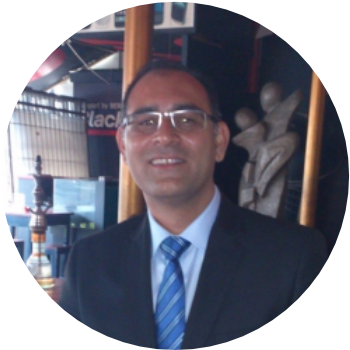
Aditya Kaul
Solution Architect
Juniper Networks
Aditya is a technology evangelist, innovator and a seasoned telecommunications specialist with background in Planning, Design, Implementation and Operations of NexGen IP Architectures. Aditya holds in depth understanding of Services Business and has been a key contributor in Planning and Designing Future State Architectures. He is working at Juniper Networks as Professional Services Principal Solution Architect for APAC.
“Coding business logic into the network through automation – A large tier 1 case study”
In this session we will present the case study of a large tier 1 operator in APAC who leveraged automation as a part of a larger business transformation effort. Automation played a key role is this transformation by allowing them to create new services with encoded business logic, reduce time to market, differentiate customer experience and reduce the cost of delivering services at scale. The presentation will cover the multi-year journey of this operator and the Automation building blocks that made it happen.

Dennis Kom
Sales Director
Corning
Dennis has more than 20 years of working experience in the info-communication industry. His passions and interests revolved around the domains of structured cabling systems, enterprise networking, digital video technologies and low voltage power protection systems.
Prior to joining Corning, Dennis had assumed several key positions within Sony Electronics. He had also held technical positions as Senior Network Engineer with Defence Science & Technology Agency, Sales and Application Engineer with VMC Technology, and Head of Engineering / Systems Sales with Knockner-Moeller.
“From fast to faster: A journey through cutting-edge transceiver tech, backbone infrastructures, and AI/ML connectivity”
OpenAI’s achievement in training ChatGPT-3.5 on 175 billion parameters, leveraging thousands of GPUs, underscores the immense potential for implementing AI clusters in diverse customer environments.
This presentation will explore:
- How 400G NDR (Next-Generation Data Rate) InfiniBand in a 2x400G optic is revolutionizing support for AI and machine learning models
- The differences with Ethernet, as well as complex terms like GPU, POD.
- The scale and trajectory of AI architectures (Leaf-Spine networks)
- Getting to grips with the Nvidia DGX SuperPOD
- Evolution of Ethernet Transceivers and their connectivity similarities with InfiniBand trends, as well as how structured cabling can support both
- Evolution of duplex transceiver to multifiber transceivers and migration paths to new connector formats

Jose Leitao
Network Engineer
Meta
Jose is a production engineer in the Network.AI team at Meta. His team responsibilities include maintaining, monitoring, and improving the global production network infrastructure, with a focus on the backend network.
“The boy who cried SLI: A tale of too many alerts”
For our global networks, managing on-call notifications and ensuring network reliability are pivotal challenges that have evolved significantly over the years. This presentation presents a comprehensive overview of the historical progression of alert systems within Meta network infra, emphasizing the on-call experiences of network teams faced with noisy alerts. The traditional methods often led to alert fatigue, where critical alerts were lost amidst numerous non-critical notifications, compromising response times and network reliability.
The core of this study introduces a new product developed based on Network Service Level Indicators (NetSLI). This innovative approach aims to drastically change the notification processes for on-call engineers by implementing intelligent alerting mechanisms that prioritize alerts based on their impact on service reliability. We leverage advanced algorithms to effectively filter and escalate alerts, ensuring on-call personnel receive timely and relevant notifications. Furthermore, it incorporates a sophisticated tracking system to monitor and measure the progress in handling reliability issues, providing actionable insights into system performance and on-call response efficacy.
By integrating these technological advancements, the proposed solution enhances on-call engineers’ efficiency and significantly improves overall network reliability. This presentation will discuss the implementation strategies, the challenges overcome during the development phase, and the potential future enhancements that could further refine on-call experiences in network operations. Through this innovation, we aim to set a new standard in network management, focusing on reducing noise and enhancing the precision of alerts in high-stakes environments.

Lawrence Leng
Lead Technology Advisor
Anritsu Pte Ltd
Lawrence is Lead Technology Advisor from Anritsu Singapore. He has more than 30 years of experience in the telecom industry. Prior to his career with Anritsu, he was involved in radio frequency research & development work with Mindef in Singapore.
Since joining Anritsu more than 25 years ago, Lawrence has been part of the Field Marketing team that provide technical advice and support to customers and channel partners in the South Asia region with special focus on 5G Mobile Fronthaul, transport technology like 800/400G Ethernet, ECPRI, OTN, etc. During his work, he travels around South Asia countries regularly to present the latest test and measurement solutions relating to telecommunication technologies.
“Wifi-7 technology sharing”
Join our Wifi-7 Technology Sharing session to explore the evolution of IEEE 802.11 WLAN standards. We will cover the limitations of 802.11ac (WiFi-5), the advancements of 802.11ax (WiFi-6), and the differences between WiFi-6 and WiFi-6E. Additionally, we’ll discuss the adoption of the unlicensed 6GHz band and how WiFi-7 technology surpasses its predecessors, enhancing connectivity and performance. Gain valuable insights into the future of wireless networking.

Lefteris Manassakis
Technical Leader
Cisco ThousandEyes
Lefteris is a network engineer with a background in networking research. He is currently a Technical Leader at Cisco ThousandEyes. Previously, he co-founded Code BGP, a company specializing in BGP Monitoring, which was acquired by Cisco.
For more information, please visit his personal webpage at https://manassakis.net/.
“ThousandEyes BGP monitors”
At Cisco ThousandEyes, we are deploying a real-time BGP monitoring infrastructure developed originally by Code BGP, a company Cisco acquired in 2023. In this presentation, we discuss the motivations for developing our own BGP monitoring infrastructure, outline the challenges encountered during the process, and explain the solutions implemented to address those challenges. Lastly, we present routing security related incidents we have identified using our infrastructure.

Ng Zen Chuan
Senior Internet Resource Analyst
APNIC
Zen is a Senior Internet Resource Analyst in APNIC’s Services Team. With his specialized knowledge of APNIC policies and Internet resource management, Zen plays an important role in advising and assisting APNIC Members with their membership and Internet number resource queries. Zen also represents the Services Team at many community events to liaise with the Asia Pacific Internet community.
“Lightning Talk: DASH”
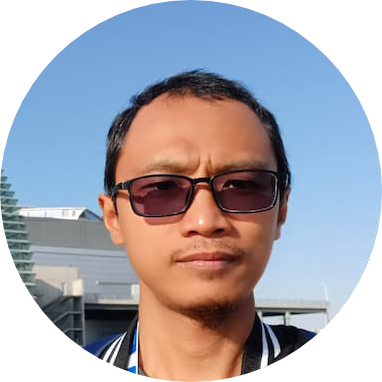
Aris Cahyadi Risdianto
Professional Officer
Singapore Institute of Technology
Aris is a former system/network engineer/administrator who has been involved in designing, implementing, migrating, and maintaining IP networks for enterprises and services provider. He is very interested in Future Internet Architecture and Open-source Networking (including SDN, NFV, and Cloud computing), so that he selected them as topics for his PhD degree as well as actively contributing to Open-source Networking Projects.
His current role is providing professional services for ICT research and education at Singapore Institute of Technology (SIT) and conducting 5G research at Future Communication Translation Lab (FCTLab). Prior his current role, he was also Senior Researcher at the National University of Singapore (NUS) that help to build Future Internet, Cloud Computing, and Cyber Security Testbeds. Apart from that he is also contributing to the Internet community where he becomes an APNIC voluntary community trainer and an IDNIC technical writer.
“Advancing 5G infrastructure and use cases through private 5G deployment and testing”
The presentation will discuss private 5G requirements and how they differ from commercial 5G, including how it can be deployed using cloud-native technologies and as easy as Wi-Fi services. As part of the proof-of-concept, the presentation will also introduce the Future Communications Translation Lab (FCTLab) at the Singapore Institute of Technology (SIT), where the dedicated 5G testbeds are built for supporting 5G application use cases development, as well as enhancing the 5G deployment and testing.

Philip Smith
Senior Network Engineer
RouteViews
Philip has been involved in the Internet since the late 1980s. He has run his own consulting company, PFS Internet Development, since 2013. He works for some of his time with the Network Startup Resource Center, and in 2023 started supporting the RouteViews Project as Peering Coordinator. He also consults for several organisations around the world. He is chair of APRICOT and serves on committees of several NOGs. He previously worked at APNIC; before APNIC, he was a member of the Internet Infrastructure Group in CTO Consulting Engineering of Cisco Systems for 13 years.
Prior to joining Cisco in 1998, he worked at PIPEX (which became part of UUNET’s global ISP business), the UK’s first commercial Internet Service Provider. He was one of the first engineers working in the commercial Internet in the UK, and played a key role in building the modern Internet around the world.
Philip has extensive technical and operational experience with the ISPs, Service Providers and IXPs around the world. His areas of experience include IPv6, BGP, OSPF/ISIS, network design, configuration, scaling operations, peering, and training. Philip was inducted into the Internet Hall of Fame in December 2021. Philip has a PhD in Physics, is a native of Scotland, and lives in Brisbane, Australia.
“The RouteViews project: Update”
RouteViews was initiated in 1995 at the University of Oregon to allow network operators see what their routing tables looked like from an external perspective. Over the years since, this community project has set up collectors in strategic locations around the world, allowing network operators a rich view of their routing announcements, and researchers a valuable resource for tracking the growth and variations in the global Internet infrastructure.
The 27-year data set of BGP information archived by RouteViews since 1997 helps network operators and researchers identify and address issues related to routing stability, security, and performance of the global Internet. Network operators utilize RouteViews data to understand reachability, hijacks, peer visibility, mass withdrawals, and RPKI status.
This presentation shares the latest developments in the RouteViews project, now operated on behalf of the global Internet community by the Network Startup Resource Center (NSRC).

Kenichi Watanabe
Director, Sales and Business Development
NTT-AT

Yuki Low
Senior Sales Manager
NTT-AT
Kenichi is NTT-AT’s Director of Sales and Biz development, including optical networking related products which support customers to realize stable and robust optical network. He has more than 30 years both Sales and Engineering experience in this field. Prior to transferring Sales in 2013, Kenichi led development team of optical related products which include OLP (Optical Line Protector) and optical connector tester, and he has deep knowledge and expertise in optical physical connection.
Yuki is a Senior Sales Manager in NTT Advanced Technology based in Singapore, where she explores and develops ASEAN markets, builds up the connection with the customers and acts as the communication bridge between Japan and ASEAN countries.
“Return loss problems associated with faster optical networks”
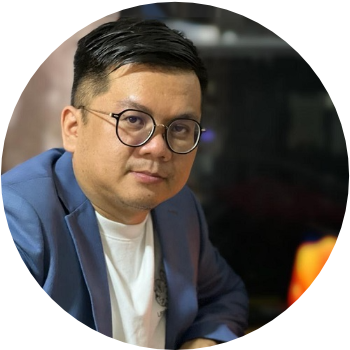
Wong Chan Heng
Senior Technical Director
Genie Networks
With nearly two decades of experience in the telecommunications industry, Chan Heng is a seasoned expert in Telco IP Networks Planning, Network Traffic Analysis, and DDoS Solutions. Wong’s extensive journey in the industry has provided a robust skill set in designing and implementing cutting-edge solutions that optimize network performance and security
“Enrich NetFlow by metadata”

